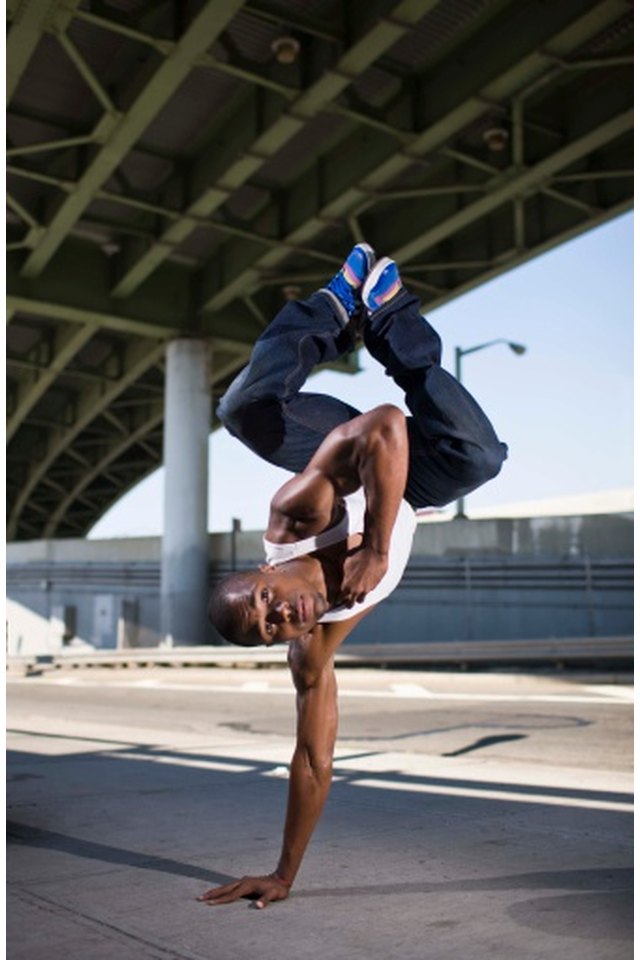Different Types of Breakdancing

Breakdancing first became mainstream in the late 1960s. In the 1970s and 1980s, breakdancing was extremely popular among the youth of inner cities. Originating in New York City, breakdancing was predominantly performed in African American communities. Breakdancing combines numerous forms of dance and martial arts moves. Today, breakdancing is common in dance schools as well as hip hop and pop music videos.
Top Rock
Top Rock is a style of breakdancing that is performed in an upright position. Top Rock moves are generally easier for beginners to master and are frequently used as warm-ups for experienced breakdancers. Top Rock style may include power stepping, step-hops and side-stepping.
Foot Work
Fancy foot work is another important element in the breakdancing community. Foot work is performed while standing and includes a number of different dance counts. Breakdancers may perform foot work based on counts ranging from 2 step to 12 step. Kicks, spins and shuffles are also important in breakdancing foot work.
Drop Moves
Breakdancers are known for their moves that involve sudden changes from dancing on their feet to performing movements on the floor. These moves are known as drops. Drops can include knee, sweep, thread, corkscrew and coin drops. Drops are any means of going from your feet to your knees or body.
Body Moves
Floor Rocks -- or body moves -- are dance moves that are completed with a vast majority of your body touching the floor. Breakdancers may perform scissors, worms, body glides or swimming movements. A majority of these moves are completed on the belly.
Power Moves
If you have ever seen a dancer spinning on their head, this is what is referred to as a power move. Power moves are difficult to perform and need to be performed with 100 percent accuracy in order to achieve high marks during a breakdancing competition. Many breakdancers may adopt one of these moves as their signature move. These may include head spins, windmills, flares, back spins and halos.
End Moves
The end of a breakdancing routine may be signified by the use of a freeze or suicide move. Freezes may include an air chair, head stand, flag or elbow freeze. A dancer holds this movement for a few seconds at the end of a routine. A suicide is another type of breakdancing move that involves a move where a dancer pretends to fall down. The movement may look uncontrolled or painful but in reality it is just a memorable way to end a routine. Suicides may include a pencil spin, coin drop or headflip.
Writer Bio
Michelle Zehr started writing professionally in 2009. She has written on health, fitness, fashion, interior design, home decorating,sports and finance for several websites. Zehr possesses a Bachelor of Arts in communication from the University of Pittsburgh, a Master of Arts in professional writing from Chatham University and a graduate certificate in health promotion from California University of Pennsylvania.
